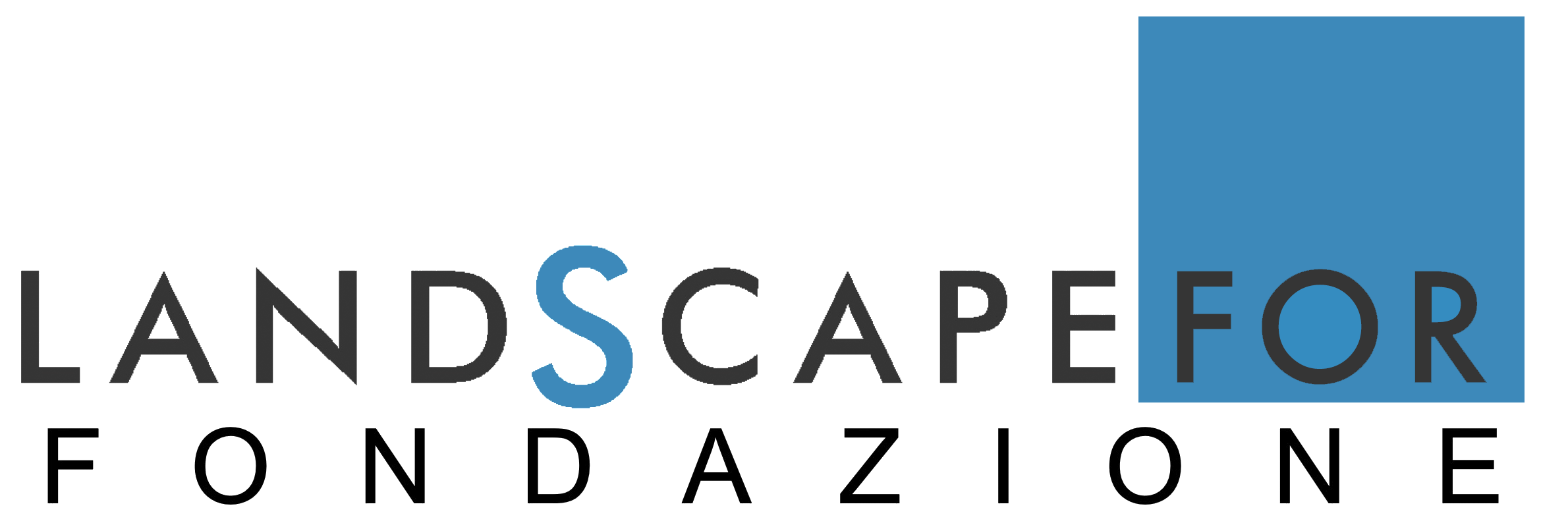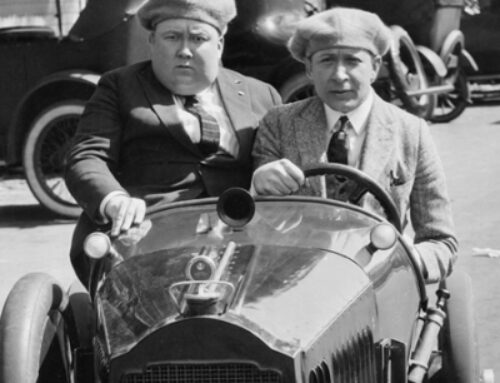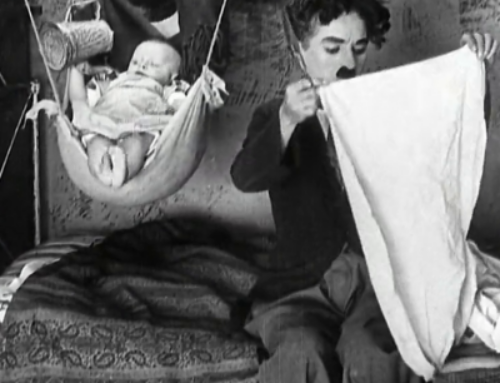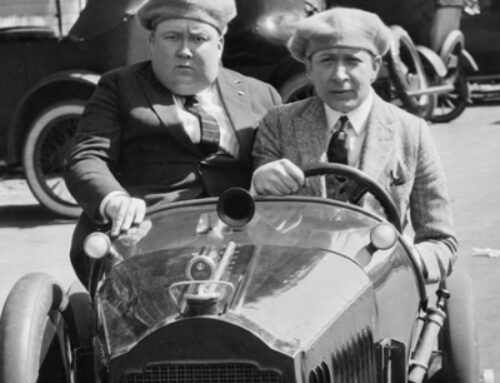The article Stitching up the patchwork of local identities, published in the Doc section of this site, concludes by describing Italy today as the realm of the Sleeping Beauty in her sleep.
It is certain that, to initiate a strategy to revive ‘Sleeping Beauty’. a reconnaissance that generically identifies potential forces to act on the territory’s culture is not enough. To shake off the rust, there needs to be a massive investment of energy, organisational, communicative and technical skills to smoothen relations between entities, operators and society. But all this, assuming an enlightened government has the strength and courage to promote it, cannot succeed if the spell is not first broken. What is needed is an injection of awareness and a sense of responsibility that intercepts citizens of goodwill and puts them back in touch with their city, as one should do with anything loved, to understand its needs and care requirements. Only then can the role of those who are working for the city emerge, and more organised and effective services can be demanded of them.
In fact, until now the role of the actors in the area for culture has been almost irrelevant, in the eyes of citizens and administrators, because their activities are widespread but fragmented, poorly networked, often unknown to each other, neglected or even considered an obstacle by institutions. And even the cultural heritage, both material and immaterial, which is taken care of locally and which constitutes the basic fabric of our country itself (as we have tried to recount above) is by now largely unknown by the inhabitants themselves, who at most know how to place its main aspects on historical and geographical axes, while all the systematic and relational effect that has made the city, its knowledge, its fame, remains in the shadows.
Therefore, the immediate objective is to raise awareness of the cultural force available to cities, in their heritage of things and people, and to call everyone, starting with the operators themselves, to a sense of operational responsibility towards that heritage. It is a matter of generating for the widespread urban culture the same process of involvement that was finally triggered for the environment, after 50 years of attempts.
It is necessary to realise, in the cities and in the minds of the participants themselves, that there are so many who are playing a role in the production and management of the local cultural landscape, that their activities, often unknown, can become relevant if they are appropriately showcased and organised in a network, using the currently accredited media and the methods most recognised by the new generations.
It is an overall communication effort that we believe is capable of overcoming the current stalemate and making it possible to recognise, starting from each local situation, the availability of action already present, which constitutes an extraordinary potential resource, probably the only one that can enhance the entire country today, by focusing on the rediscovery of the synergies of our heritage and our urban and territorial landscapes.
This is an epoch-making effort, of the same order as that made in the post-unification period, to which the Touring Club made such an important contribution. Even now, in times of policy centralisation, it is necessary to give legs to punctual initiatives with a progressively covering effect, like those of that time, without hiding the enormous difficulty of a participatory strategy in these sectarian and quarrelsome times.
We have begun. With the LandscapeFor Association, we have prepared and made AtlasFor available to territories that wish to use it.
It is a tool that allows each local society to activate the first step: to make everyone aware of what they have in the city or in the territory, of the complex cultural property that is assigned to them by history and by the activities that still take place, in order to valorise the assets and to project into the future the feeling of local knowledge accumulated so far.
The ‘atlas’ format was chosen for this presentation of local heritage, choosing it among other types of lists of assets and activities (the guide, the encyclopaedia, the historical sedimentation, etc.), precisely to encourage the rediscovery of places, of the relationships of proximity between assets and activities, to foster the emotions ofaserendipity, the chance encounter of things and people we do not know in a city we think we know.
AtlasFor is an open-source web-app, which makes available an online platform with direct access from www.landscapefor.eu, where points of interest (POIs) concerning heritage and cultural activities are located on maps and dossiers illustrating them are opened, mainly using images.
It is portable on smartphones and tablets and thus allows visitors to visit the city and its territory while having the AtlasFor documentation as support.
In order to popularise AtlasFor, an editorial project has been drawn up, which is being carried out using methods and tools that operationally address all the critical aspects of the situation that we highlighted in the introduction. The editorial project is entitled APPA – Atlas of Heritage and Active Landscape, to emphasise the fundamental specificity of our initiative, which focuses directly on local operators, who become ‘Active Landscape’ when they participate in urban affairs, in our case not only by showcasing their activities but also by contributing to the drafting of the materials and stories that make up the POI files.
APPA is a programme that has been running for two years and today, having verified how it works in areas such as Turin or Este, we can look at it as a whole, setting out the criteria behind it in an orderly fashion. It seems to us that the fundamental method followed, of achieving with each part of our project a balance between different and apparently conflicting aspects, is also the one that most simply describes our initiative in response to the complex landscape crisis we wish to counter.
This is why, as a conclusion, we propose the five pairs of functional and content aspects that are addressed synergistically in the APPA project and that we can consider the founding pillars of our project.
4.1 Heritage/Active Landscape
Of the Heritage AtlasFor documents what most participates in making up the sense of each city and each territory as a Common Good. Therefore, on the one hand the points of interest, whether historical or recent, of architecture or social life, which connote and make memorable the public space and the morphologies of the open landscape, and on the other hand those intangible aspects which define the recognised characteristics of a place: from the know-how behind typical productions (e.g. in the Langa) or the ability to organise recurring events (e.g. in Spoleto), to the craftsmanship and artistic skills (e.g. in Cremona).
On the other hand, we are convinced that the sense of the city as a Common Good does not only derive from stones or historically consolidated culture, but also from good practices, from the ‘beautiful actions’ of those who take care of culture and the quality of urban life, from the projects implemented, from the activities that work to manage contemporary complexities.
The operators who take care of these initiatives mostly move in the social sphere of ‘culture producers and curators’, which we have highlighted as a primary resource of any landscape enhancement process. They are highlighted in AtlasFor as ‘Active Landscape’ for their achievements and services useful for the quality of local life and the preservation of the Common Good of each city or territory.
It is an unknown world on the whole, full of positive surprises, difficult to bring out, also because it touches a rich variety of productions hitherto kept sectorially separate: from ‘normal’ managers of cultural heritage to curators of performing art centres, from innovators in the social field, for reception and accessibility to operators for lifelong learning in cultural topics, for accommodation and catering etc.
In order to bring out the excellences of the ‘Active Landscape’ we have activated two channels: on the one hand, we rely on the reconnaissance skills of local ‘antennae’, chosen from among the stakeholders and connoisseurs of the area’s events, or by acquiring the national or international contest selections for the best sectoral performances and having them ‘land’ in the places where the operators are produced or located. This is what we are doing with those selected in the Landscape Awards, with the activities of UNESCO Clubs, with the actions planned by Parks or Ecomuseums or with the accommodation or catering activities chosen by Slow Food.
By localising the initiatives or services of highest quality, singular aspects of proximity and relations emerge both between operators and between these and the heritage aspects of the city: significant places and those productive of culture, notable architectures or traditional landscapes intersect and suggest possible synergies with activity centres and places of innovation.
4.2 Highlights/Diffuse Assets
APPA’s primary objective is the ‘territorialisation’ of the recognition of cultural heritage: we would like to move from an imagery of the identity of places made up only of ‘flagship properties’ to the plurality of diffuse points of interest and, above all, to an ensemble effect that makes the overall specificities of each city or each territorial sphere appreciated in a sort of feeling. The need for a strategy of integration between highlights and diffuse assets emerged clearly in an appropriate venue: the 2016 National Conference of UNESCO Heritage, where the lament of unknown and isolated Sites was accompanied, in a negative balance, by that of the mayors of towns choked by the hit-and-run tourism that the UNESCO logo recalls. Valle Camonica suffers like S. Giminiano for opposite reasons, which can in any case be traced back to the inability to ‘spread’ visitors over the territorial context, adequately narrating the qualities of the ‘minor’ assets and facilitating their access and overall comprehension with special itineraries.
Faced with this situation, the APPA Project, in order to begin to populate the maps of the cities and the national territory, has identified an initial series of areas to be documented: those in the context of UNESCO Sites and historical routes (consular and medieval), in which, from the Alpine passes of the Vie Francigene to the beauties around Palermo, we count on recounting over 5,000 points of interest.
The criterion followed is that of showing places starting from their aspects that really ‘make the difference’, that is, that connote the specificity and identity of that area (as Barthes used to say of the punctum that made each photograph meaningful).
In the area, the identity punctum is not always the castle or the cathedral: in certain towns in Piedmont or the Marches, the foundation wall is of more interest than the towers with battlements (because only with that wall can one play fist ball – or bracelet – for centuries), or the fishermen’s cove counts more than the seaside promenade, the market square more than the town hall square.
APPA therefore follows a ‘dissipative’ strategy, continually relating points of interest with their surroundings, highlighting aspects of cultural heritage, monumental or otherwise, for the role they play (now or then) in the lived city, bringing out even minor components of the productive territory or selecting itineraries because they bring out intriguing stories, or because they are located in fascinating places, or because they are clues to other curiosities to be discovered.
4.3 Images/Recounting
If one hundred years ago the Touring Club presented photographic books of the regions of Italy as a novelty, today it is evident that communication is overwhelmingly entrusted to the image (still or preferably moving). The image is not a sign denoting a precise meaning, it is full of connotations, it conveys an approximate meaning but involving sentimental components, references to other images according to subjective connections that escape reason.
In the last 100 years, images have become pervasive, documenting not only ‘official’ culture, but also news, customs, songs, film settings, details that escape the first glance. These are contents of knowledge and emotion, which we make available in the moment of direct approach, organised for the visit in a continuously implementable narrative. In fact, AtlasFor exploits the technology that offers the possibility of having images and videos in front of a monument or in any place, to see what it was or what it will be like, to compare the atmosphere then with the atmosphere now. Photos or videos present the history, projects, events, contexts and works of art that have featured each heritage asset, each place in the city.
In this way, an illustrated book is formed: the card of each point of interest presents an image with a caption on each page.
But communication by images, uncoordinated and well-integrated, runs the risk of fuelling that fragmentation of information and inability to understand complexity that are the plague of the approaches to culture of recent generations.
Therefore, if on the one hand AtlasFor provides sequences of images to enrich the feeling of the visit, on the other hand we want to connect them according to a fil-rouge that holds their meaning together, making them participate in a single portrait of each place.
To carry out this difficult but indispensable task, we are trying out a method of writing concentrated in the captions of the images, but according to a development that develops each card like a story, starting from the place’s location in the context, its history, the projects that have defined it, up to the events it has witnessed, the intriguing details it conceals, the feelings that the artists have felt and tried to convey.
We want to achieve a narrative in which the writing is at the service of the images and constitutes their connective tissue. This is why we are trying to unify a ‘style’ of AtlasFor, to be declined, however, in the contributions of the many authors who are helping us, because for each city, for each territory, the words of those who now have that landscape in their DNA and who know how to make its overall scent be felt, starting from a detail, from an event, from a memory, are necessary.
On the other hand, we try to capture the story of the ‘Active Landscape’ operators, because no garden is as interesting as the one presented to you by those who look after it every day. And Italy, the ‘garden of Europe’, has gardeners everywhere: hundreds of thousands of people who work hard to maintain it and offer it to the visitor at its best, also with the storytelling ability that comes from consolidated knowledge.
4.4 Archival Documentation/Initiative Showcase
The possibility of bringing iconographic documents of all kinds to places opens up very complex operational scenarios. There is a variety of potential offers: think of the archivist who keeps historical papers frayed by time and less exposable every year, the collector who has left a treasure trove of vintage photographs, the architect who is losing his plans drawn on transparencies and reproduced in heliographs. If papers, photos, plans were digitised, they could become public without risk, while the originals could be kept in suitable environments, without anyone asking for access anymore. But all this happens with difficulty and only for the most ‘useful’ documents, partly because so far there is no demand for them, except by a few scholars or undergraduates.
On the other hand, there is a potential demand, and we verified this in Turin with 300 students for the Alternanza scuola-lavoro and with the Order of Architects: every teacher would like to put a tablet in the students’ hands that contains images of the history that has passed over a place and go and discuss it in that very place; every architect would like to go and see a recent piece of architecture with the possibility of having, there in front of him, the sections and plans of the project that, perhaps, were published in a specialised magazine ten years earlier.
So AtlasFor is organised to display iconographic documents with reference to places: it offers an immediately useful way of making public the precious archives of images of institutional operators, from the Istituto Luce to the State Archives, and of the countless private archives, unpublished for the cost of paper publication (or edited and ended up on dusty shelves). But it is only in the last few months that institutional channels are progressively becoming affordable to ordinary users and some holders of private iconographic archives are getting in touch with the Landscapefor Association. So far, we have started to bring the story of the territory back to the map with the materials available on the web or in publications that allow it.
It is here that we find the postcards of the city of yesteryear, the sites of nostalgia with which we opened the discourse, but it is still an immense informal archive, apparently reachable with a simple Google query, but in fact fragmentary, unordered and therefore, if necessary, impracticable for our purposes if not as a repository of material to be organised into a story, place by place.
However, in order to document the Heritage/Active Landscape pair, in parallel to archive documents AtlasFor reproduces documents on cultural initiatives, in order to offer an integrated tale of places, between history, project and actuality.
In this sense, AtlasFor offers a showcase for operators who provide quality services or care for the cultural quality of the area. These are the activities of associations that collect historical evidence, of curators of otherwise abandoned properties, but also of ‘hotels de charme’, producers of wine or typical food.
In the territorial areas covered by APPA (in 2019 the North-West regions), a selection of ‘Active Landscape’ operators are offered a sort of showcase, so as to foster their promotional capacity by autonomously reporting their own initiatives, not only in the construction of their localised activity card, but also by providing a News window that takes up the notices posted on Facebook by each subject and makes the icon of their POI shine on the Atlas in the days preceding the event and is published on a local and/or network Events Calendar. An example is the ‘Active Landscape’ Calendar in Turin, where, through a number of ‘antennas’ in each neighbourhood, more than one hundred subjects were involved (which can be activated from the AtlasFor Turin Routes of the Centre archive).
4.5 Guest’s Tale/Visitor’s Gaze.
In our opinion, those who devote care and attention to places are also best placed to provide material and interpretative keys to describe them. We would like each of the local operators involved to take on the role of a guest who receives friends and provides them with an account of the events he or she has experienced in those places or has heard himself or herself told.
We look for the Guest’s Tale in them because it is more intriguing, more exciting, more involving than any other guidebook. Because it acquaints a vast and international audience with people and not just stones, activities and not just monuments, local pride and a sense of identity and not just history or nature. Because it makes updating automatic and convenient, based on the ‘showcases’ where operators report initiatives, services, products, events.
But to the Tale of the Guest, the fundamental curator of the Atlas’ contents, we want to accompany the raised finger, the impertinent observation, the irony of those watching from the gallery.
We are interested in the ingenious forester who perceives a feeling, a trace, an implicit sign on the fly and from this, like the reel of a river fisherman, goes back to a strong nucleus of that territory, brings to the surface a submerged piece of culture and way of doing things, suggests a way that is lost in the murky but intriguing, that seems to lead to unexplored rooms of a place that one believed, until a moment before, to know every single fold.
We want to grasp the product of another type of landscape curator, not sedentary but nomadic, explorer: it is the photographer who walks the ridges, the blogger who spends the evening at the table with good wine and a view of the piazza, the performer who animates a meadow at the edge of the woods on a summer evening, the architect who makes a ruin habitable. It is the visitor’s gaze, the result of an experience, of an experience concentrated often in a few hours, with few witnesses. It is a treasure that is lost, if it is not kept within reach of every other visitor, at the disposal of those who experience that landscape anew: the video or the photo will certainly not reproduce the intensity of that productive experience, but they are better than nothing, and above all they lead everyone to learn lesson no. 1 of landscape: a place is an incitement to look with other eyes, to listen with new ears, to touch peels and stones, to talk to people simply because they are there.
That’s it: AtlasFor wants to bring to the curious (‘of the place’ or ‘a luogo’, like the Latin complements) images and videos that bring different and complementary stimuli: on the one hand from the archives of memory and consolidated local knowledge, and on the other from the most diverse sensitivities and projects that, taken by the power of that landscape, have reacted and secreted incisive and destabilising signs.
An entire section of AtlasFor is dedicated to exhibiting the author’s reproductions (photos, paintings, videos, music) in the places to which they refer. Thus, in Turin, for example, we can be moved by scenes from films by Dario Argento or Ettore Scola, shots by Bernardo Bellotto or Mario Gabinio, which we can look at again from where they were taken.
If with the Guest’s Tale we come into contact with the ‘Active Landscape’, with the Visitor’s Gaze the visitor himself becomes an ‘Active Landscape’, acquires the models and examples to see with particular eyes, to add an external interpretative touch to what the inhabitant has told you. In fact, AtlasFor allows the accredited visitor to insert his or her own images, commented with captions, and to build a private archive, accessible only to him or her, to give storytelling form to the impressions and investigation of favourite places, with his or her own dossiers and itineraries drawn up by choosing materials already present in Atlas and accompanying them with his or her own.
This is how the project is completed: AtlasFor gives us an account of the patrimonial landscape and the active one, composing dossiers of mainly iconographic materials chosen and narrated by local curators, by the exploration skills of exceptional artists and visitors, but also normal ones, like each one of us. It all serves not only to show the richness of the diffuse heritage and the potential of the cultural work that is continually being carried out by the thousands of local operators, but also to make us aware of how easy and fascinating it is to get involved in caring for the landscape and the city, which are already ours or which become ours by election.




